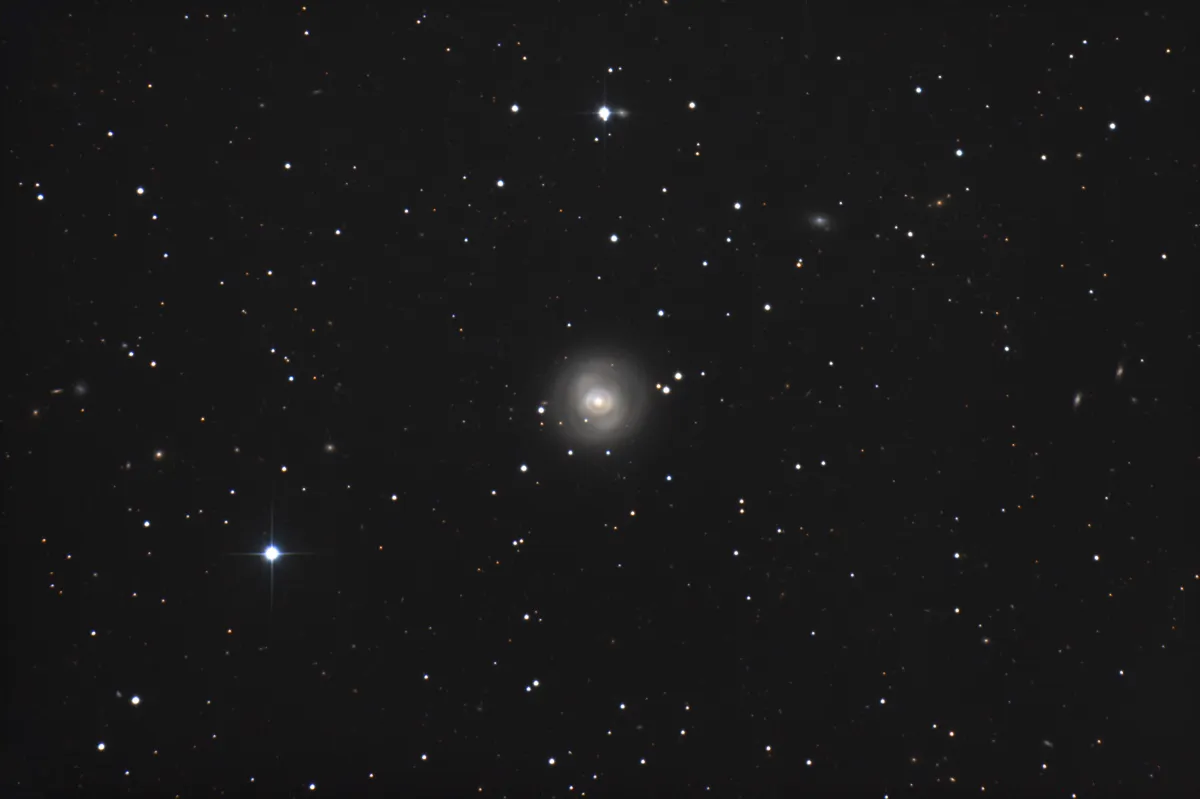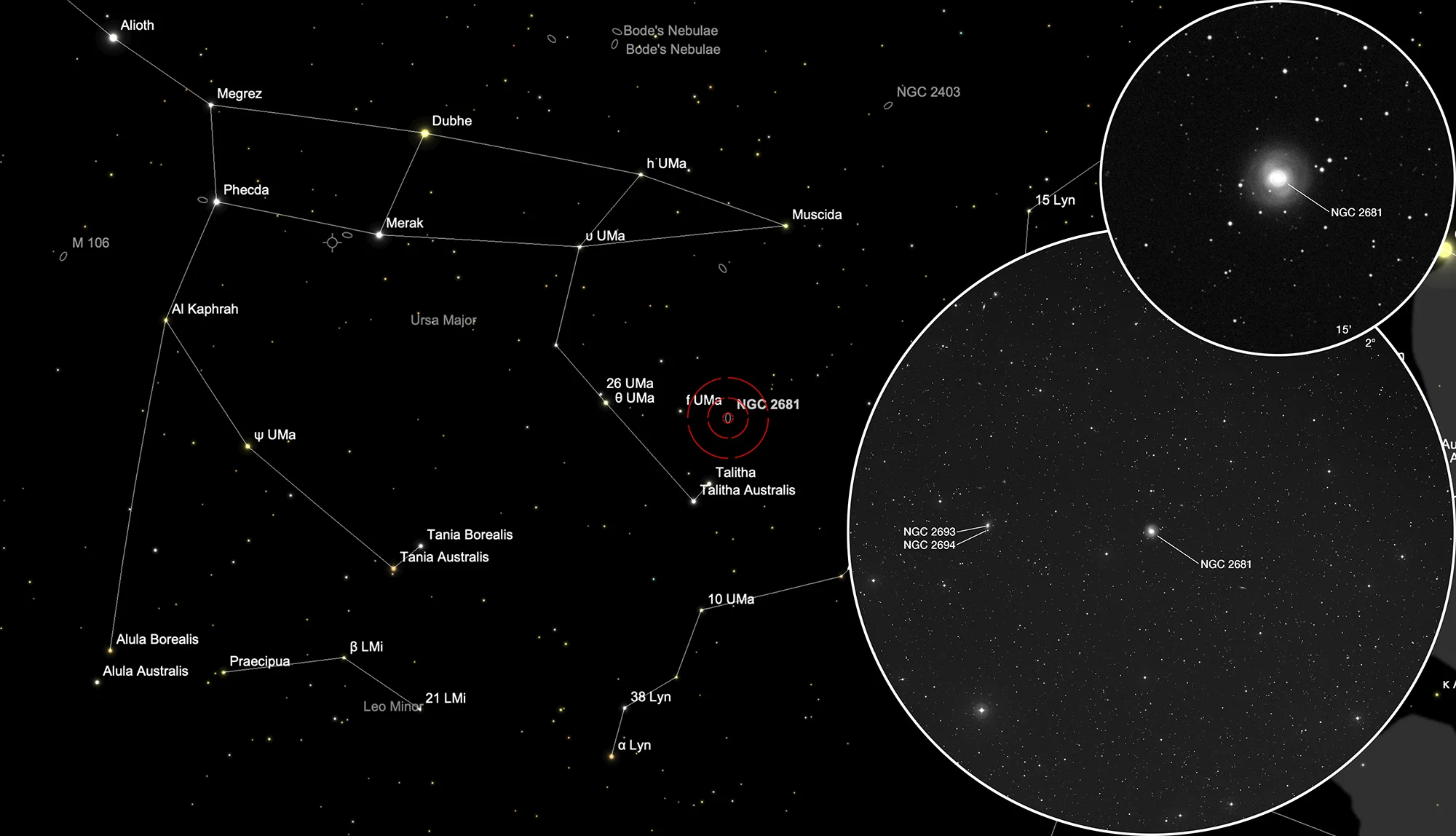Galaxy NGC 2681

History
William Herschel discovered NGC 2681 (bright nebula I 242) and NGC 2693 (faint nebula II 823) on 17 March 1790. He recorded for I 242: «Very bright, large bright resolvable nucleus with very faint chevelure» and for II 823: «Pretty bright, small, round, much brighter in the middle.» [465] The galaxy NGC 2694 was discovered by George Johnstone Stoney, Lord Rosse's assistant, on 9 March 1850. [364]
Physical Properties
| Name | RA | Dec | Type | bMag | vMag | B-V | SB | Dim | PA | z | D(z) | MD | Dreyer Description | Identification, Remarks |
|---|---|---|---|---|---|---|---|---|---|---|---|---|---|---|
| NGC 2681 | 08 53 32.5 | +51 18 47 | Gx (SB0-a) | 11.1 | 10.3 | 0.8 | 12.9 | 3.6 × 3.3 | 36 | 0.002308 | 9.75 | 15.250 | vB, vL, vg, vsmbM * 10 | WH I 242; h 530; GC 1711; UGC 4645; MCG 9-15-41; CGCG 264-26; ARAK 185; IRAS 08500+5130 |
| NGC 2693 | 08 56 59.4 | +51 20 52 | Gx (E1) | 12.8 | 11.9 | 0.9 | 13.6 | 2.6 × 1.8 | 160 | 0.016485 | 69.63 | 58.150 | pB, lE, psmbM | WH II 823; h 535; GC 1720; UGC 4674; MCG 9-15-55; CGCG 264-35 |
| NGC 2694 | 08 56 59.2 | +51 19 57 | Gx (E1) | 15.4 | 14.4 | 1.0 | 14.7 | 1.2 × 1.2 | 0.016977 | 71.71 | vF, vS, 1' s of h 535 | GC 5435; MCG 9-15-56; CGCG 264-34; NPM1G +51.0121 |
Finder Chart
The galaxy NGC 2681 is located in the constellation Ursa Maior. The best viewing time is October to July when this circumpolar constellation is highest at night.
